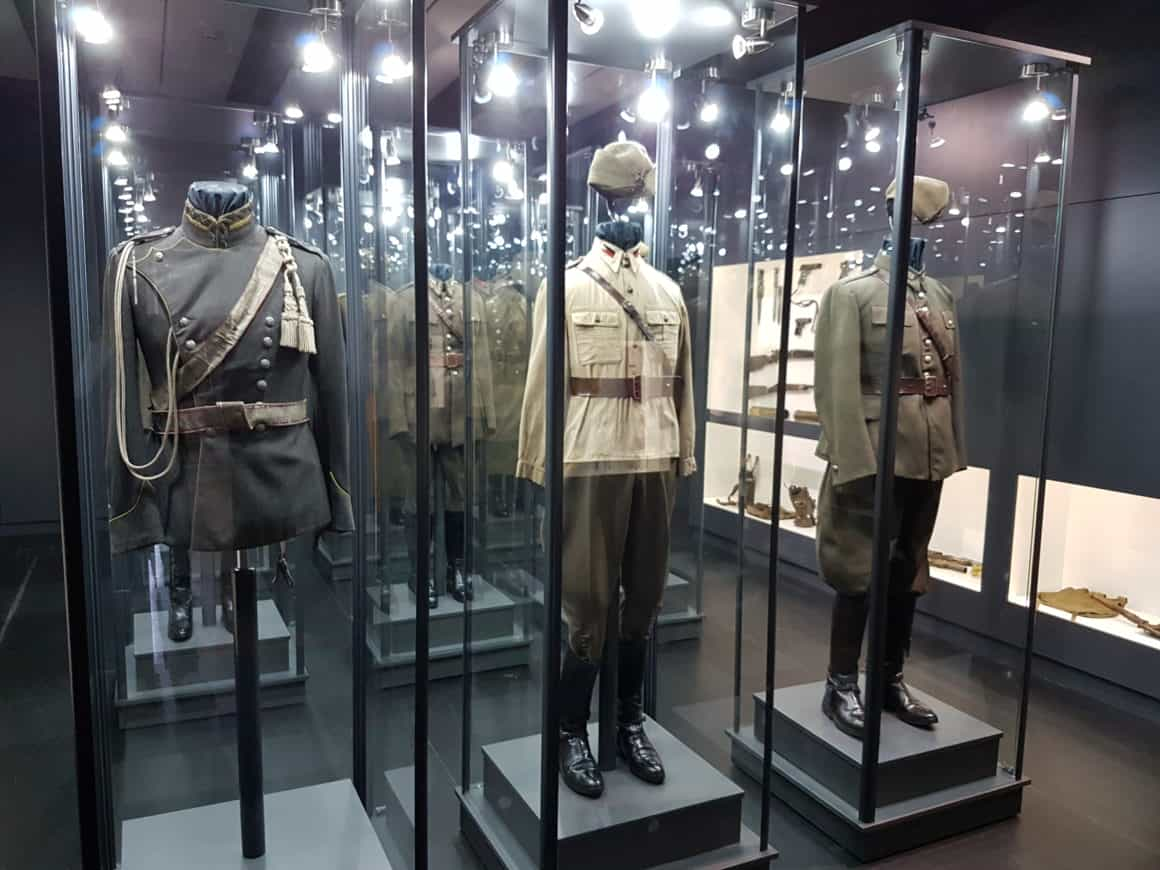It is a good idea to start your sightseeing tour of Grudziądz with a visit to the Rev. Władysław Łęga Museum. The complex of a former Benedictine monastery, where the museum is currently located, is one of the most valuable monuments of Baroque architecture in Pomerania. The intimate interiors of the monastery house the Gallery of Contemporary Pomeranian Painting. Other exhibitions are located in the Abbots’ Palace and granaries.
- THE CAVALRY TRAINING CENTRE IN GRUDZIADZ 1920-1939 (4 Klasztorna Street, Pałac Opatek) – the Abbotess’ Palace presents the history of the Cavalry Training Centre. Here one can admire a magnificent collection of weapons. In the central part of the hall, a life-size sculpture is set up, depicting cavalrymen on horseback, at a gallop, referring to the famous charges of the 18th Pomeranian Cavalry Regiment and the 14th Jazłowiec Cavalry Regiment, from September 1939. A further part of the Hall is dedicated to the history of the school and everyday life in the barracks. On the first floor, original cavalry uniforms with equipment and a collection of firearms and elements of cavalry equipment are presented. The second area is dedicated to the all-round training of the cavalryman. Personal memorabilia of cavalrymen can also be found here. In front of the entrance to the hall, there is a replica of the banner of the Cavalry Officers’ School, by which successive classes of cadets from the Cavalry Cadet School and the Cavalry Reserve Cadet School were sworn in.
- THE GALLERY OF MODERN POMERANIAN PAINTING (Central Building, 3/5 Wodna Street) – The small and cozy interior of the central building features the Gallery of Modern Pomeranian Painting, which is the showcase of the Art. Section. It displays the works by Pomeranian artists since 1945. The collection includes a number of multivalent works representing various artistic trends from realistic art to various kinds of abstract art.
- RUN, BRONEK, RUN…! BRONISŁAW MALINOWSKI (1951-1981). OLYMPIC CHAMPION. ATHLETE (15-17 Spichrzowa Street) – an exhibition devoted to the memory of Bronisław Malinowski presents a profile of the outstanding Polish athlete, runner, and gold medalist at the Olympic Games in Moscow. The exhibition presents numerous medals, including the most valuable Olympic medals, as well as sports and commemorative cups, medals and documents, and photographs illustrating the most important events of his sporting career. Bronisław Malinowski died on 27 September 1981 in a car accident on a bridge in Grudziądz.
- THE HISTORY OF GRUDZIĄDZ (Granary, 9 Spichrzowa Street)
Four floors of the granary are home to a permanent exhibition recording the history of the town and its development from the medieval period up to the year 1939. The exhibition is arranged chronologically – each room is devoted to a particular period. The first room shows the Grudziądz of the Middle Ages and the Nobles’ Commonwealth period (from 13th to 1772). The second room features the spatial arrangement and architecture of Grudziądz through a wide range of maps, prints, photographs, and a mock-up of the town, which is an excellent prelude to sightseeing. The third room shows Grudziądz under partitions and during the assumption of independent statehood by Poland in 1920. An undeniable attraction is a mock-up of the fortress. Finally, the fourth room boasts souvenirs recording the history of Grudziądz in 1920–1939 – the period marked by the development of industry, craft and cultural life.
- ARCHEOLOGICAL EXHIBITIONS (Granary, 11/15 Spichrzowa Street)
Here you will find archaeological exhibitions: „Small medieval stronghold in Plemięta”, „Roman influences in Grudziądz”, „Medieval jewelry from Gruczno” and „Northern part of Kulmerland in prehistory and Middle Ages”.
- THE FLIS MUSEUM OF VISTULA TRADE – The FLIS Museum of Vistula Trade is a branch of the Rev. Władysław Łęga Museum in Grudziądz. It is located in two historic granaries number 33 and 35 dating from the 16th to the 17th century.
The main idea of the exhibition is to show in the broadest possible historical and cultural aspect, the Vistula route running through Grudziadz as a trade route. At the same time, it is a story about the people and the city that grew up on the banks of the ‘queen of rivers’. The exhibition presents the basic types of vessels, the various goods that were floated down the river, as well as the professions involved in the Vistula trade.
While visiting the Museum of Vistula Trade, one is also introduced to the history of granaries in Grudziadz and the local industry connected with grain processing, the main branches of which were: baking, the production of alcoholic beverages and the manufacture of agricultural machinery.
The exhibition is complemented by bread baking educational workshops – for both individual and group visitors.
Muzeum im. ks. dr. Władysława Łęgi
3/5 Wodna Street , 86-300 Grudziądz, tel. +48 56 465-90-63
Muzeum Handlu Wiślanego Flis
33-35 Spichrzowa Street, 86-300 Grudziądz, tel. +48 56 465-90-63 w. 62



